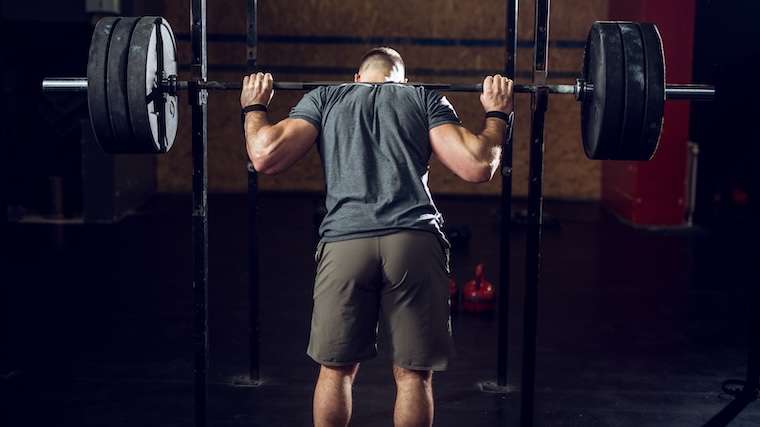[ad_1]
If your knees naturally cave during squats, that might be okay.
Last updated on June 10th, 2024
The optimal squat form is often a hotly contested topic. Conventional wisdom has long held that pushing the knees out (i.e., external rotation) while squatting is necessary to protect the joints. A March 2024 study published in the Journal of Strength and Conditioning Research challenges that belief. (1)
Dr. Layne Norton, Ph.D. in Nutritional Science and professional powerlifter, published a video on his YouTube channel discussing the study’s findings and exploring the potential benefits of knee valgus, or knee cave-in, during squats for glute activation. Check out the video below:
Knee cave-in during squats is usually considered a risk for injury. However, the study found no significant difference in injury rates between those who squat with their knees out versus those in. Participants squatting with knee valgus reported slightly less knee pain and greater adductor and glute activation.
Per Norton, forcing knees out during squats might not effectively engage the glutes. On the other hand, a deep squat with knee cave-in results in a deep glute stretch, leading to better activation.
The study found that the force exerted on the knee during squats with knee cave-in wasn’t enough to injure the ACL or other knee structures. This contradicts a common belief that knee cave-in increases ACL tear risk. Norton highlights that most ACL tears during squats happen after a lifter’s quad muscle tears in the bottom position, causing the legs to collapse inward, and the weight’s velocity then ruptures the ACL.

 Image via Shutterstock/Dusan Petkovic
Image via Shutterstock/Dusan Petkovic
Norton cites the example of Lya Bavoil, the 69KG world record-holding powerlifter from France, who squats with significant knee cave-in but has never experienced knee injuries to prove his point further.
Norton clarifies that the study does not encourage people to squat with knee valgus if they don’t naturally do so.
Lifters with really strong glutes may gravitate toward a bit more knee valgus because they’re activating their glutes over their adductors.
Norton adds that individuals with strong glutes, who naturally squat with knee valgus, may benefit from maintaining that form. Conversely, lifters with perfect knee alignment but weak glutes could enhance their form and performance by focusing on glute strengthening exercises.
Notably, the study found that individuals with pre-existing conditions like patellar instability should avoid squatting with knee valgus, as it could exacerbate their condition.
There is no one perfect form, and form doesn’t seem to predict the risk of injury.
Ultimately, the best knee position during squatting depends on an individual’s anatomy and biomechanics. Determine what works best for your body. Consult a qualified fitness professional if unsure about your optimal knee position while squatting.
References
- Chiu L. Z. F. (2024). “Knees Out” or “Knees In”? Volitional Lateral vs. Medial Hip Rotation During Barbell Squats. Journal of strength and conditioning research, 38(3), 435–443. https://doi.org/10.1519/JSC.0000000000004655
Featured image via Shutterstock/Dusan Petkovic
[ad_2]
Source link
Fitnessnacks – #Knees #Caving #Squats #Bad
Courtesy : https://barbend.com/knees-caving-during-squats-bad/
